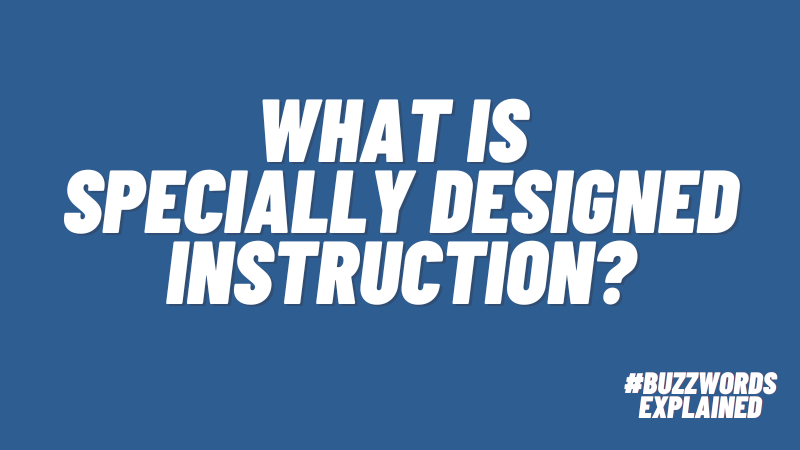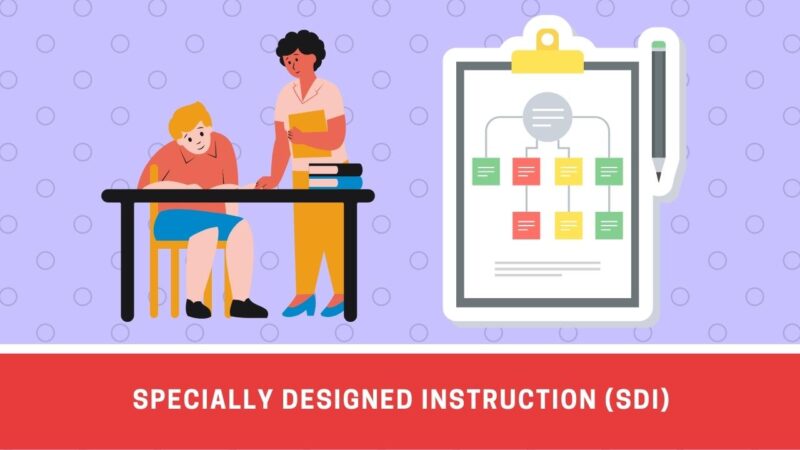

When a student receives special education services, they receive “specially designed instruction.” That could be speech therapy to teach them how to correctly say their sounds, or it could be academic instruction in the self-contained classroom from a special education teacher. But what is specially designed instruction and why is it important for kids with disabilities?
The Individuals With Disabilities Education Act (IDEA) defines special education as “specially designed instruction,” or SDI, that is free to parents and meets the unique needs of a child with a disability. The instruction can take place anywhere, from general education to the child’s home, but it’s specifically designed only for that child.
Some specific types of SDI:
SDI is provided so that the student can meet the educational standards that apply to all students in a district. So, receiving vocational education may be provided to help a child with a disability meet career and independent living outcomes set for all students.

Every IEP includes a reason for why a student requires specially designed instruction in a certain area—academic, speech and language, fine motor, gross motor. Then, the IEP team decides what SDI looks like for each student and writes it into the IEP. SDI can address everything that a child could be taught, from behavior to social skills to reading and math. But what SDI a student actually receives depends on their disability and how it impacts them at school.
Specially designed instruction:
Specially designed instruction is NOT:
The implementation of specially designed instruction happens through the child’s IEP. It teaches specific skills that the student doesn’t yet have but needs in order to access the curriculum. A qualified special education teacher, or provider, like a speech therapist, delivers SDI. That said, SDI can go hand-in-hand with general education strategies, like Universal Design for Learning and PBIS. It also overlaps with general education because it aligns with standards and formative assessments given to general education students.
ADVERTISEMENTSimilar to MTSS (multi-tiered system of support), where students receive intervention using research-based practices, SDI can involve instruction through a program, Orton-Gillingham for reading, or an evidence-based practice, like a questioning strategy, to teach skills. The difference is that the program is provided through the student’s IEP rather than through an intervention plan. To qualify for an IEP with a learning disability, for example, a child will need to have received interventions, which can be the same as SDI, as part of the evaluation process. So, their IEP may continue the same SDI but through the special education teacher rather than the interventionist.
Specially designed instruction that can be included in an IEP:
Watch a video about specially designed instruction.
The Wrightslaw blog is the definitive place to go to research special education law.
The Council for Exceptional Children has resources about special education.